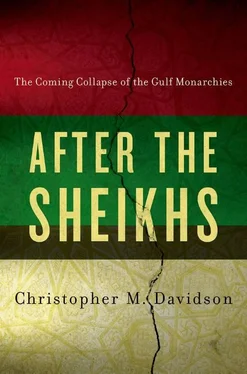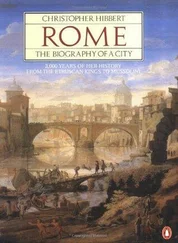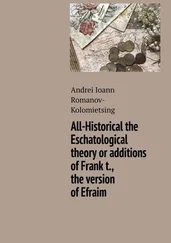The Saudi ruling family has always been in the tightest position, given its described alliance with the Wahhabi movement, given the presence of two of Islam’s holiest shrines in Mecca and Medina, and given its hosting of millions of Muslim pilgrims each year. Since 1986 the king of Saudi Arabia even changed his official title to ‘Custodian of the Two Holy Mosques’ [287] 66. Fahd bin Abdul-Aziz Al-Saud was the first Saudi king to change to this title.
—reviving a pious title formerly used by the caliphs, the Ottoman sultans, and Egypt’s Mamluk sultans. But the smaller Gulf monarchies, even though none claim such specific religious credentials, are also wary. Much like Saudi Arabia, all rely on non-Islamic powers — namely the US — for their security guarantees, with most also physically hosting such troops on their territory. And since 9/11, and the Anglo-American invasions on nearby Muslim countries — Afghanistan and Iraq — their position has clearly become more precarious.
The strategies for containing and co-opting Islam have varied in each of the monarchies, depending on their circumstances, although there are some common patterns. In a similar manner to the recently deposed leaders of the Arab authoritarian republics, loyal clerics of the Gulf’s ruling families have from time to time invoked certain Koranic passages in order to justify absolute power. As per a late-2011 statement by Al-Azhar University on the Arab Spring, this has usually been done by narrowly interpreting a verse [288] 67. Koranic verse 4/59.
which states ‘O you who have believed, obey Allah and obey the Messenger and those in authority among you’. The verse has frequently been cited in isolation, but as the Al-Azhar statement contends, it should never have been cited out of context, and especially without considering the preceding verse, [289] 68. Koranic verse 4/58.
which states ‘Indeed Allah commands you to render the trusts to whom they are due and when you judge between people to judge with justice’. [290] 69. Al-Azhar Statement in Support for the Arab Revolutions, released on 31 October 2011.
The Saudi ruling family has probably gone the furthest with this strategy, with the Wahhabi religious establishment and its government representatives claiming that the Al-Saud enjoy ‘rightful leadership’ or wali al-ahd on this very basis.
The smaller Gulf monarchies, notably Qatar and the UAE have instead concentrated on using their resources to police and fund their mosques and domestic religious establishments. Almost all clerics are government employees, and these are quite closely monitored. Most have to carry photo identification cards, and their sermons usually have to be chosen from an official list of approved topics, drawn up by the relevant government body each week. A 2006 cable from the US embassy in Abu Dhabi confirms this practice, describing how ‘UAE officials publicly and strongly condemn extremism and terrorist attacks, anti-extremism has been the focus of government-approved Friday sermons in the mosques’. [291] 70. Wikileaks , US Embassy Abu Dhabi, 29 April 2006.
As well as providing generous salaries to clerics, thus slotting them into the rentier state’s giant public sector, wealth in these monarchies has also been used to build large and often lavish mosques, religious schools, and other institutions. Unsurprisingly some of the biggest mosques in the world are now in the Gulf monarchies — such as Abu Dhabi’s Sheikh Zayed Grand Mosque, which was built by the government and can accommodate 40,000 worshippers. Taking several years to complete, it cost more than $540 million and is the burial place of the late Zayed bin Sultan Al-Nahyan. Although there are some exceptions — such as Qatar’s largest mosque, which is simply called ‘Qatar Mosque’ or ‘Fanar’, [292] 71. Fanar referring to ‘Light house’ as the mosque was founded to provide a guiding light for Qatari and expatriate Muslims living in Doha.
and the proposed new Al-Farooq Mosque in Dubai — most of the largest mosques in the Gulf monarchies usually carry the name of a key ruling family member, despite invariably having been built using state funds. There are of course countless other projects connecting Islam to the largesse of the ruling families or the state, some of them highly innovative and often winning positive headlines for the sponsors. In the UAE, for example, the Dubai International Holy Koran Award Committee has begun planning and designing a holy book collection or mushaf named after Abu Dhabi’s ruler — the ‘Sheikh Khalifa bin Zayed Al-Nahyan Mushaf’. The aim is to produce a million of these volumes which will then be freely distributed ‘under orders of the prime minister’. [293] 72. WAM , 18 August 2011.
Set on its own island and designed by the same architect as the contemporary section of the Paris Louvre, Qatar’s enormous Islamic Arts Museum is another powerful example; one closely associated with the ruler and his high-profile wife Moza bint Nasser Al-Misnad. It opened in late 2008 and has been featured in dozens of international newspapers and magazines.
Also providing ruling families with religious legitimacy, or more accurately allowing rulers to portray themselves as tolerant, benevolent monarchs, there has been much support for other religions in some Gulf monarchies. With the exception of Saudi Arabia — where all other religions are banned — Christianity is booming in the Gulf monarchies, courtesy of substantial Indian and Filipino expatriate populations. Churches for almost all denominations exist in the five smaller Gulf states, including even evangelical chapels. Prime land, usually donated by a ruling family member, continues to be gifted to these churches to aid in their expansion. In Abu Dhabi, an ancient Nestorian Christian monastery which had been discovered on one of the emirate’s outlying islands was even opened to the public in 2010 by the government’s Tourism and Development Investment Company [294] 73. Catholic News Agency , 16 December 2010.
—thus acknowledging and celebrating the country’s pre-Islamic past. Hindu and Sikh temples also exist in some of these states, as does a Zoroastrian tower of silence in Dubai, which has on occasion been the location of Zoroastrian world congresses. Although, as discussed in the following chapter, there remains a nominal boycott on Israel by the Gulf monarchies and synagogues are not permitted in any of these states, there are nonetheless some pockets of tolerance for Jews. In Bahrain for example, there exists a tiny community of Bahraini Jews. Although their number has dwindled from several hundred to just a few dozen, they are reportedly well respected and have served in the upper house of the parliament. In 2008 the king even appointed a Jew as Bahrain’s joint ambassador to the US, Canada, and Brazil. [295] 74. New York Times , 5 April 2009. The Bahraini ambassador to the US was Houda Ezra Ebrahim Nonoo.
Environmental credentials
The Gulf monarchies rarely conjure an image of being environmentally friendly, given the centrality of hydrocarbons to the region and the various associated heavy industries, most of which rely on abundant fossil fuel. Moreover, the generous public sector salaries, the extensive welfare benefits, and the other trappings of the rentier state also lead to expectations of high consumption lifestyles for many Gulf nationals, including multiple vehicles per household and a heavy reliance on air-conditioning. According to the US Department of Energy’s Carbon Dioxide Information Analysis Center, the Gulf monarchies now suffer from some of world’s highest per capita carbon dioxide emissions. In 2008 Qatar was the worst ranked country in the world, with 53.5 metric tonnes of carbon dioxide emissions per capita. The UAE was the third worst, with 34.6 metric tonnes, while Bahrain was ranked fifth, with 29 metric tonnes. Kuwait, Saudi Arabia, and Oman were all not far behind, being ranked seventh, thirteenth and fourteenth respectively. [296] 75. According to data supplied by the US Department of Energy’s Carbon Dioxide Information Analysis Center.
Given the rapid development in the region since 2008, especially in Saudi Arabia, Qatar, and the UAE, it is likely that they remain among the world’s worst offenders — perhaps having increased their lead. Waste per capita is also believed to be very high in the Gulf monarchies, with a recent study concluding that Abu Dhabi had one of the highest waste per capita rates in the world — some six times greater than Western European countries. [297] 76. The National , 9 July 2010.
Improvements have been made across the region, but most waste is still thought to be dumped in desert landfill sites. Although vehicles per capita is a less useful measure for the Gulf monarchies, given that the rate for citizens is likely to be much higher than that for expatriates, it is noteworthy that Qatar is now firmly in the world top ten according to World Bank figures, with 724 vehicles per thousand residents, while Bahrain and Kuwait are close behind. [298] 77. World Bank Data 2011 referring to ‘Motor Vehicles per 1000 people’.
Читать дальше












